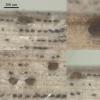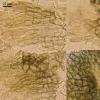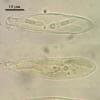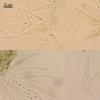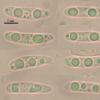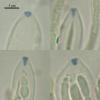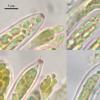
09-01-2026 17:41
Arnold BüschlenHallo, F. dilatata wird von vielen Bryoparasiten

10-01-2026 20:00
Tom SchrierHi all,We found picnidia on Protoparmeliopsis mur

07-01-2026 22:22
 Danny Newman
Danny Newman
Tatraea sp. on indet. hardwood The Swag, Great Sm

10-01-2026 01:18
 Danny Newman
Danny Newman
cf. Neovaginatispora fuckelii on indet. shrub Pre

07-01-2026 10:24
 Danny Newman
Danny Newman
Pezicula sp. on indet. hardwood Appalachian Highl

09-01-2026 10:08
 Blasco Rafael
Blasco Rafael
Hola, en el mismo habitat que la anteriorRetamaDia

08-01-2026 21:22
 Blasco Rafael
Blasco Rafael
Hola, He recogido esta muestra de Orbilia sobre Re

07-01-2026 17:29
 Marc Detollenaere
Marc Detollenaere
Dear Forum,On a barkless Populus I found some smal

10-11-2021 17:33
 Riet van Oosten
Riet van Oosten
Add-on topic http://www.ascofrance.com/forum/7059

07-01-2026 10:05
 Danny Newman
Danny Newman
cf. Chaetospermum on XylariaCosby Campground, Grea
Hysteropezizella diminuens
Nina Filippova,
12-02-2013 16:44
From dead leaves of Eriophorum angustifolium, wet bog hollow.
Apothecia immersed in tissue, ellipsoid, to 350 x 170 mk, opening by ellipsoid slit, disc pale, surrounded by dark brown edge.
Excipulum from textura angularis at base, cells dark brown, about 10 mk in diam, textura prismatica at the edge, end cells (hairs) cylindrical or clavate, 15-20 x 5-8, brown, walls of end cells under immersion with roughness; asci clavate, inamyloid, 59-67 x 12,5-14,6; paraphyses cylindrical with ampulliform end cell, about 3 mk broad and segmented in lower part, ampulliform cell up to 5 mk in broadest part, hyaline, with small guttules (rarely seen in rehydrated), not or some exeeding the asci; spores subfusoid, many-guttulate, 17 (15,7-17,7) x 3,7 (3,4-4,2) (Q=4,67; N=13).
Hans-Otto Baral,
12-02-2013 18:09

Re : Hysteropezizella diminuens
Yes, these are globose, rather inconspicuous (low-refractive) VBs which stain turquoise-blue in Cresylblue, but you see them only in living state.
Did you pretread your asci with KOH?
Hysteronaevia olivacea would have inamyloid asci, and paraph. as yours, but has much broader spores with acute ends.
Zotto
Did you pretread your asci with KOH?
Hysteronaevia olivacea would have inamyloid asci, and paraph. as yours, but has much broader spores with acute ends.
Zotto
Nina Filippova,
12-02-2013 19:04
Re : Hysteropezizella diminuens
I used water-lugol, and MLZ and they were inamyloid, now added KOH, heated, and strong amyloid reaction happened. So, this shows they are actually amyloid?
Paraphyses hyaline and brownish in different fbs at one leaf, is seems variable.
I posted Hysteronaevia olivacea some before: http://www.ascofrance.fr/forum?page=1&id=21842
Paraphyses hyaline and brownish in different fbs at one leaf, is seems variable.
I posted Hysteronaevia olivacea some before: http://www.ascofrance.fr/forum?page=1&id=21842
Hans-Otto Baral,
12-02-2013 21:19

Re : Hysteropezizella diminuens
This is the very typical hemiamyloid reaction, and it shows that your Lugol is insufficient. You should get a bright red reaction in water + lugol. Maybe your solution is almost colourless (the photo looks so), or it contains unallowed ingredients. Hemiamyloid rings in Melzer are negative without KOH.
Sorry, I confused your two postings. So yes, this is H. diminuens. My answer on paraphyses, of course, concerned the Hysteronaevia, I will change it accordingly.
Zotto
Sorry, I confused your two postings. So yes, this is H. diminuens. My answer on paraphyses, of course, concerned the Hysteronaevia, I will change it accordingly.
Zotto
Nina Filippova,
13-02-2013 11:55
Hans-Otto Baral,
13-02-2013 12:09

Re : Hysteropezizella diminuens
Yes, this is fine! Possibly the reaction has a blue component that becomes visible at lower iodine concentrations, resulting in a more dirty red (type RB).
